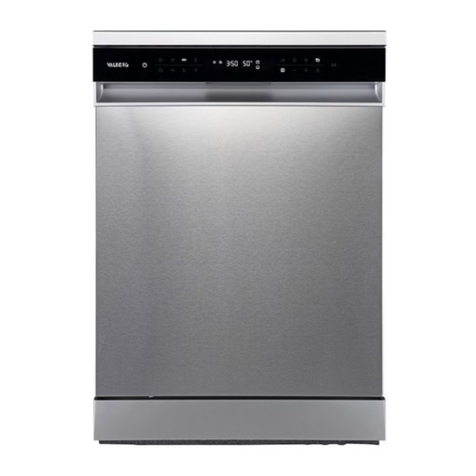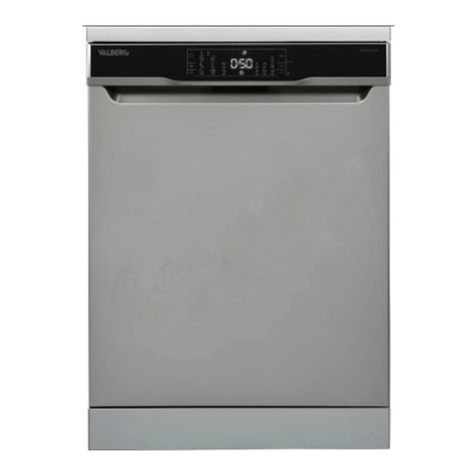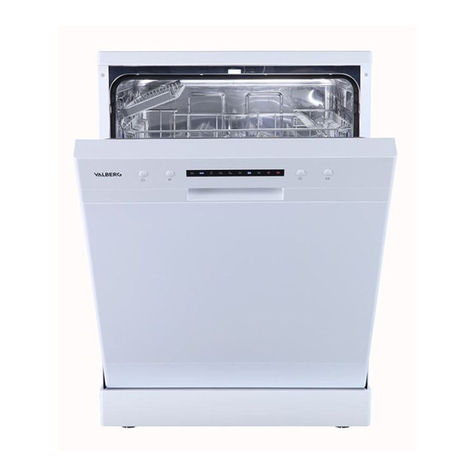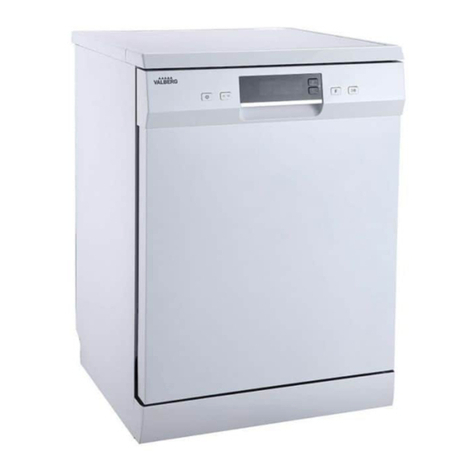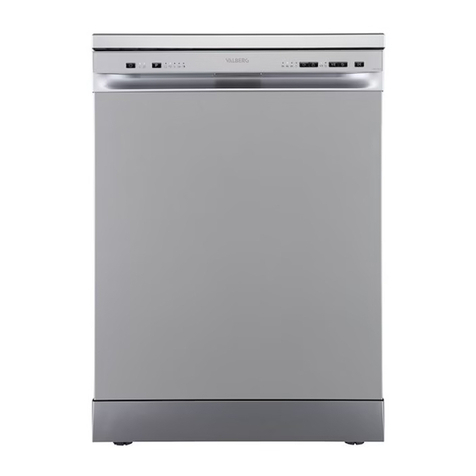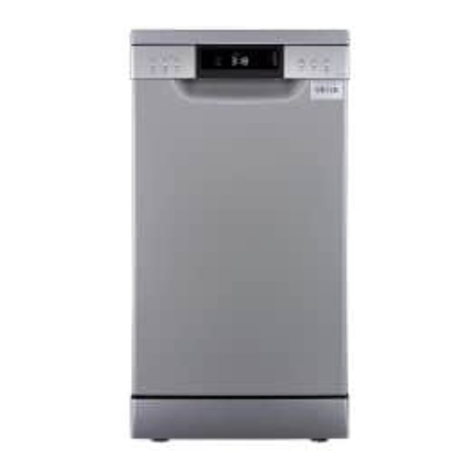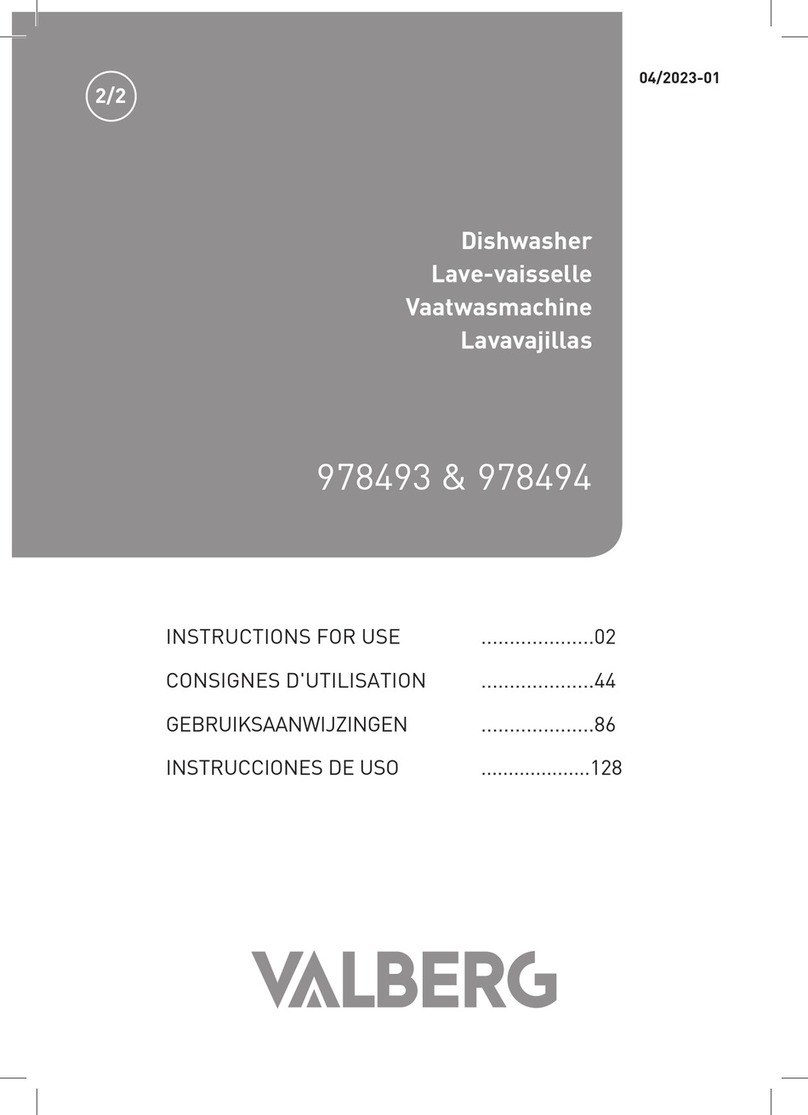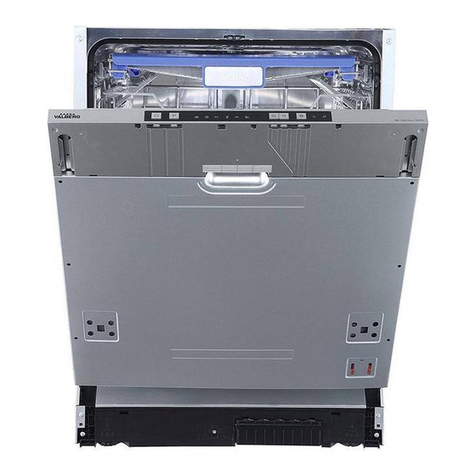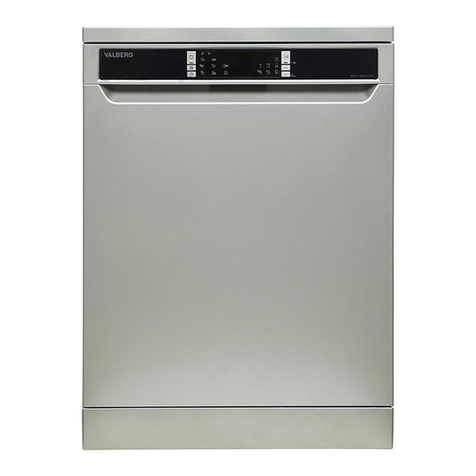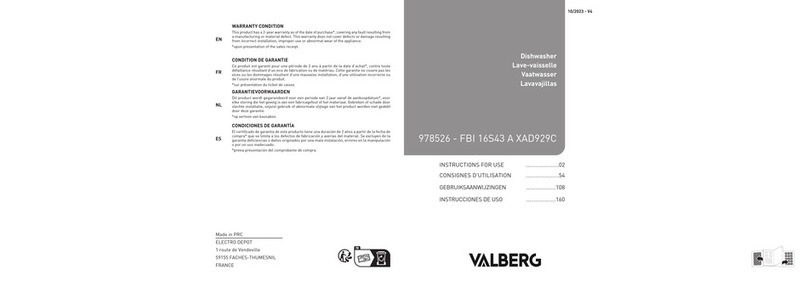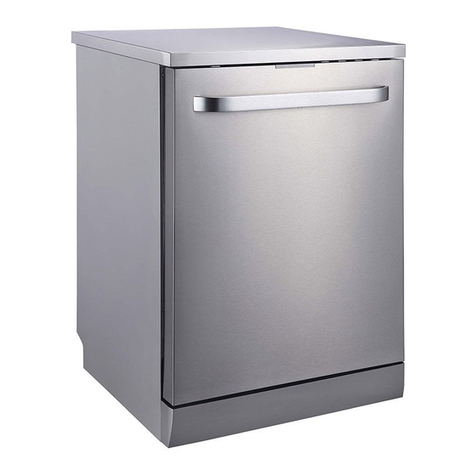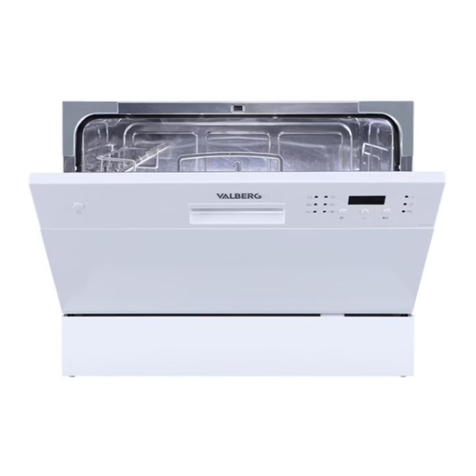
10 11
FR FR
Utilisation de l’appareil Utilisation de l’appareil
B B
10 11
EN EN
Using the appliance Using the appliance
B B
Installation instructions
WARNING : Risk of electric shock
Disconnect the power supply before installing the
dishwasher. Failure to do so could result in death or electric
shock.
Information on electrical connections
WARNING : For your personal safety:
•Donotuseanextensioncordoradapterwiththisappliance.
• Under no circumstances should you cut or remove the
earthed connection from the power cord.
• Caution: Risk of overheating, fire and electric shock:
• Respect the technical characteristics of the appliance in the data sheet attached to the
instructions (voltage, frequency, power, required water pressure, etc.) for your
installation.
• Use A 20A branch circuit breaker or a 16A fuse on
the appliance's dedicated circuit.
The power cables must be 2.5 mm² thick and the residual-current circuit breaker must have
a
30 mA rating.
• The power point must have a protective earth connection. If the socket is non-compliant
or damaged, replace it and check that the electrical installation complies with the
aforementioned
requirements.
WARNING : Check that the appliance is properly earthed
before using it.
Water inlet and outlet
Cold water connection
• Connect the cold water supply hose to a 1.9 cm threaded fitting and ensure that it is tight.
• If the water supply pipes are new or have not been used for a long time, let the water run
to check it is clear.
• This is required to avoid the risk of the water supply being blocked, which could damage
the appliance.
Standard inlet hose
WARNING : A hose connected to a spray tap can burst if it is
installed on the same water pipe as the dishwasher. If your
sink is equipped with one, it is recommended to disconnect
the pipe and block the hole.
How do I disconnect the safety inlet hose?
1. Close the water supply.
2. Unscrew the safety inlet hose from the tap.
Connecting the drain hoses
• Insert the drain hose into a drain pipe with a minimum diameter of 4 cm, or let it run into
the sink, being careful to avoid bending or pinching the hose.
• The height of the drain pipe should not exceed 1000 mm.
• To avoid backflow, the free end of the hose should not be submerged in water.
WARNING : Ensure that the drain hose is securely fastened
either in position Aor position B.

